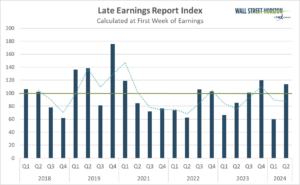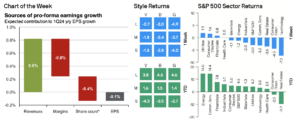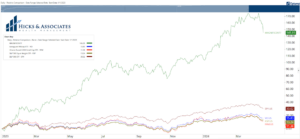Most of us who build factor-based portfolios rely on academic research as the underpinning of our strategies. And that makes a lot of sense. If we want to adopt an investment strategy that works over the long-term, then academic research offers a great testing ground to help us figure that out.
But just using academic research isn’t enough. We also have to make sure our investment strategies are based on a proper understanding of the research we are basing them on and the differences between our approach and what was done in it.
There are many ways in which real world investment strategies can differ from those run in academic testing. For example, many academic studies include microcap stocks. But in the real world, investors managing significant amounts of capital must exclude them. If the majority of the returns of a factor came from microcaps, an investor following it in the real world might be in for a rude awakening.
The most significant difference between academic research and the real world doesn’t relate to microcaps, though. It relates to the way academic research is performed in the first place. Most academic research into factors is done on a long-short basis. The research will typically take long positions in the highest scoring stocks using the factor and short positions in the lowest scoring stocks. This long-short approach is very different than the approach of the vast majority of factor strategies we typically see in the real world since they are almost always run on a long only basis.
This is not necessarily a problem. If a factor produces a strong return on both the long and the short side, or if the majority of its return comes from the long side, it is a good candidate for a long only implementation. But that isn’t the case with all factors.
So I thought it would be interesting to look at the major factors and where their premiums come from.
Here is a brief overview.
Value Premium
The value premium, as identified by Fama and French (1992), is the outperformance of value stocks (high book-to-market ratio) over growth stocks (low book-to-market ratio). In their research, Fama and French use long-short portfolios to capture the value premium. While they do not explicitly dissect the long and short contributions, other studies have attempted to address this question.
For instance, Asness et al. (2015) find that most of the value premium comes from the long side, i.e., buying value stocks. However, this conclusion may vary depending on the time period and market conditions being analyzed.
Momentum Premium
The momentum premium refers to the tendency of stocks that have performed well in the recent past to continue outperforming in the near future. Jegadeesh and Titman (1993) were among the first to document the momentum effect. They created a long-short strategy, buying winners and shorting losers based on past returns.
Chaves et al. (2013) analyze the long and short contributions to the momentum premium and conclude that both sides contribute significantly to the strategy’s performance. However, the short side (shorting past losers) appears to have a slightly more significant impact on the momentum premium.
Quality Premium
The quality premium is the outperformance of high-quality stocks, characterized by factors such as high profitability, low leverage, and earnings stability. Asness et al. (2018) analyze the long and short contributions to the quality premium and find that both sides contribute to the premium, albeit the long side (buying high-quality stocks) has a slightly more significant contribution.
Low Volatility Premium
The low volatility premium refers to the phenomenon of low-volatility stocks outperforming high-volatility stocks. Frazzini and Pedersen (2014) examine the long and short contributions to the low volatility premium and find that the long side (investing in low-volatility stocks) contributes more significantly to the premium than the short side (shorting high-volatility stocks).
So the good news is that in all these cases, the long side contributes positively to the premium and there is a strong basis for using all the major factors in a long only implementation.
Be Careful About Your Conclusions
In addition to the premiums themselves, it is important to keep in mind that other conclusions we draw regarding factors need to be analyzed in this long-short framework. I made the mistake of not doing this in a recent article I wrote.
In my article on low volatility investing, I made the following statement:
The biggest challenge I have seen to low volatility is not that it doesn’t work, but rather that its success can be explained by other factors. For example, Larry Swedroe has talked about how the majority of the excess returns from low volatility comes from when the stocks are cheap. Or in other words, a lot of low volatility’s success can be explained by periods where low volatility stocks were also value stocks.
And if you couple value with profitability or quality, the result gets even more compelling, as some research has shown that combination explains effectively all the returns of low volatility.
On the positive side for me, this statement is correct. On the negative side, I didn’t offer the proper context. Pin van Vliet of Robeco, who is a leading expert in low volatility investing pointed this out to me after I wrote the article. Although I was correct to say that the majority of the returns of low volatility can be explained by value and quality, I did not point out that most of what I said is driven by the short side of low volatility (i.e the negative alpha of high volatility stocks is driven by low quality). So what I said isn’t as relevant to the way factor strategies are typically run in practice.
None of this means that factor investing isn’t a good fit for long only strategies. The data says that it is. It also doesn’t mean we can’t rely on academic research for long only factor strategies. We clearly can. But like anything in investing the devil is often in the details and it is important to understand what we are doing in our investment strategies and how that varies from the research that supports them. Keeping that in mind can help us avoid mistakes and build more robust long-term strategies.
—
Originally Posted April 5, 2023 – The Long and Short of Factor Investing
Disclosure: Interactive Brokers
Information posted on IBKR Campus that is provided by third-parties does NOT constitute a recommendation that you should contract for the services of that third party. Third-party participants who contribute to IBKR Campus are independent of Interactive Brokers and Interactive Brokers does not make any representations or warranties concerning the services offered, their past or future performance, or the accuracy of the information provided by the third party. Past performance is no guarantee of future results.
This material is from Validea Capital Management and is being posted with its permission. The views expressed in this material are solely those of the author and/or Validea Capital Management and Interactive Brokers is not endorsing or recommending any investment or trading discussed in the material. This material is not and should not be construed as an offer to buy or sell any security. It should not be construed as research or investment advice or a recommendation to buy, sell or hold any security or commodity. This material does not and is not intended to take into account the particular financial conditions, investment objectives or requirements of individual customers. Before acting on this material, you should consider whether it is suitable for your particular circumstances and, as necessary, seek professional advice.



























